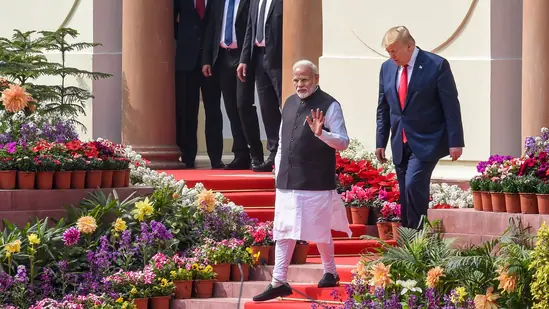India Faces 50% U.S. Tariff: Government Calls It a Temporary Setback
- MGMMTeam

- Aug 28
- 2 min read
On August 27, 2025, the United States imposed a 50% tariff on a significant portion of Indian exports. This decision came amid India’s continued purchase of Russian oil, which the U.S. perceives as a breach of sanctions. The move has drawn sharp criticism from India, with officials calling it "unjustified" and "unfair." Despite the tension, both nations have maintained diplomatic channels to manage the situation and work toward a resolution.

Government’s Response: A Temporary Phase
Indian government sources have described the U.S. tariff as a “temporary phase” in the broader India-U.S. trade relationship. Officials highlighted that the diversified nature of India’s exports will help mitigate the potential negative effects. While the tariffs present immediate challenges, the government remains confident that the impact will be manageable and short-lived. Efforts are ongoing to resolve the discord through open dialogue between both countries.
Impact on Key Sectors
The tariff affects several critical sectors, including textiles, gems and jewelry, seafood, and leather goods. For example, the seafood industry, which exported approximately ₹4,700 crore worth of products in 2024-25, has already seen a significant drop in shipments. Surat, a major global hub for diamond polishing, has reported a decline in U.S. orders. The textile sector is also under pressure, with concerns that businesses may shift production to countries facing lower tariffs, potentially affecting employment.
Economic Implications
Economists warn that the 50% tariff could reduce India’s GDP growth by up to one percentage point in the current fiscal year. Given that the United States is India’s largest export market, sectors reliant on U.S. demand could face job losses and slower growth. Despite these concerns, officials believe that proactive measures and the country’s export diversity will help cushion the economy against severe disruptions.
Measures to Mitigate the Impact
To ease the burden, India has extended its cotton import duty exemption until December 31, 2025, supporting the garment industry. Additionally, the Commerce Ministry indicated that the tariff’s impact would be short-term, particularly affecting textiles, chemicals, and machinery. Government initiatives and continued engagement with the U.S. aim to ensure that Indian farmers, small producers, and MSMEs are protected while trade disputes are resolved.
Diplomatic Outlook
Despite the tariff imposition, India and the U.S. have maintained open lines of communication. Both countries are committed to dialogue, with India emphasizing that it will safeguard its national economic interests. Government officials remain optimistic that negotiations will lead to a balanced resolution, allowing trade to normalize and economic growth to continue.
Conclusion
While the 50% U.S. tariff presents immediate challenges for Indian exporters, the government views it as a temporary setback. The country’s diversified exports, proactive policy measures, and ongoing diplomatic efforts suggest that India is well-positioned to navigate this trade hurdle. By addressing the concerns of key sectors and maintaining open dialogue with the U.S., India aims to mitigate short-term disruptions while securing long-term economic interests.
(Sources: Hindustan Times, NDTV, Times of India)




Comments